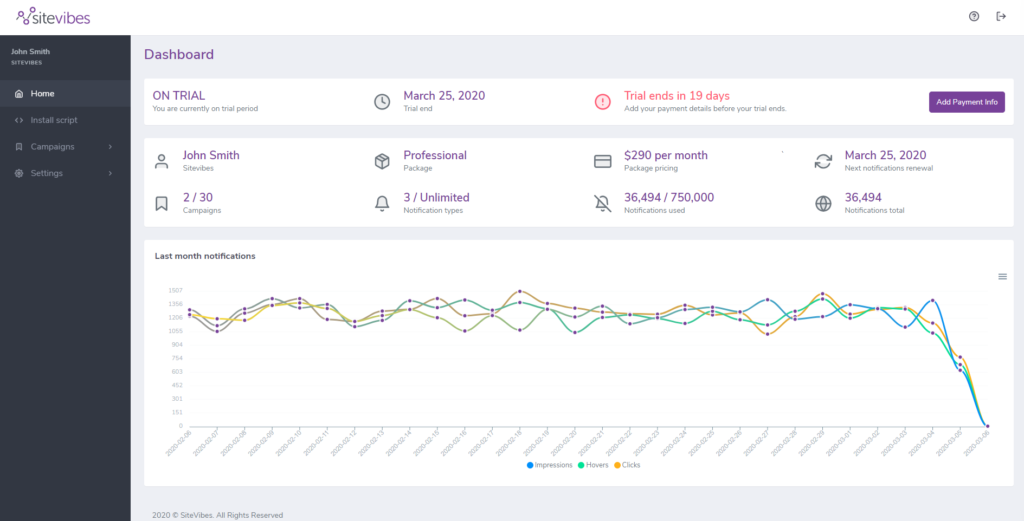5 Proven KPI’s to Track in 2020
We all love, and sometimes need, a way to quickly glance at something to make a decision or take an appropriate action. For example, a quick glance at your cell phone will tell you if you’re on schedule and will make the next train. A quick glance at the weather for the day, will tell you whether you need your sunglasses or an umbrella. We will explore what a KPI is and discuss 5 tried and true KPI’s that you can quickly glance at to confirm that your ecommerce strategy is working.
What is a KPI? A KPI is an acronym for key performance indicator. KPI’s allow companies to measure their success against a strategic initiative. For example, some KPI’s for Real Estate Agents are number of calls made, client feedback ratings, and networking goals. You may have less formal, unofficial KPI’s at home such as number of chores accomplished or number of completed loads of laundry.

For an eCommerce company, there are 5 tried and true KPI’s that you can quickly glance at to make sure that your website performance is meeting your company’s goals. The 5 KPI’s you shouldn’t ignore are:
Let’s spend some time looking at these KPI’s to find out why they’re so important.
1 – Average Order Value (AOV) – increase.
Definition: Average Order Value is the average amount spent each time a customer places an order.
Calculation: Total Revenue /Number of Orders (not customers) = AOV
Why It’s Important: An AOV that increases indicates that the tools you’re using for order upsells and bumps is resonating with your customers. In short, they’re working. And now your customers are purchasing more (which is, of course, what you want). AOV is also important because it helps drive other decisions for your business, like product pricing and advertising spend.
2 –Conversions – increase
Definition: A Conversion is the desired goal when a visitor to your website completes a specific action. For example, you have a website visitor to your eCommerce site that sells dog beds. You want that website visitor to convert to a customer, by purchasing a dog bed. Once that conversion happens, that action is part of your conversion rate calculation. There are many different conversion rates that can be calculated. Some examples are conversion rates are by traffic source, by number of visitors, or by device. The numerator in the calculation below will be the number of visitors who completed the desired goal, with the denominator being the benchmark you are measuring against.
Calculation: (Total number of conversations/Total number of benchmark metric) x 100 = Conversion Rate
Why It’s Important: Conversions represent the success behind a company’s sales and marketing efforts. It provides a mathematical glimpse, in the form of a percentage, from an action taken by a visitor or customer. An increasing percentage indicates more visitors are performing the desired action you company is looking for.
3 – Session Duration – increase
Definition: Time on site is the amount of time a website visitor spends on your site. This is usually presented as an average number and is commonly known as Session Duration in Google Analytics. The higher the Session Duration, the longer a visitor is on your website.
Calculation: The sum of total duration of all sessions/Total number of sessions = Avg Session Duration.
Why It’s Important: Session Duration gives you some insight into the quality of your website pages and the visitors coming to your site. It helps analyze patterns and trends, exposing pages that are doing well, and pages that aren’t doing quite as well. As your session duration increases, the more likely your AOV will increase as well.
4 – Landing Page Conversions – increase
Definition: A landing page is a website page specifically designed to convert visitors. There are no distractions on the page, and often times is a page reached only through a link via email or a call to action from elsewhere on the site. The landing page will include a form to convert visitors into leads. A landing page conversion is the % of visitors that converted directly from the landing page.
Calculation: Number of visitors who took action/Total number of visitors = Landing Page Conversion
Why It’s Important: The landing page conversion will provide insight into how effective your email marketing campaigns are, or how the various calls-to action on your website are working. A landing page should be viewed as an extension of your email marketing effort, and should be used as a tool to convert visitors into customers.
5 – Cart Abandonment – decrease
Definition: Cart abandonment is when a visitor adds items to their online shopping cart, but exit without making a purchase. Of the five KPI’s highlighted here, this is a KPI that you want to decrease
Calculation: 1 -(Total number of completed transactions/total number of shopping carts created)x 100 = Cart Abandonment Rate
Why It’s Important: By understanding your cart abandonment rate, you gain insight into how well your checkout process is performing. There are many variables in the checkout process that can impact the checkout process, including whether additional costs like taxes and shipping, delivery times of the product, or lack of payment methods.
In this information age of immediate gratification, it’s important to have a short list of key performance indicators you can turn to at a glance, in order to evaluate marketing efforts, business strategy or revenue growth.